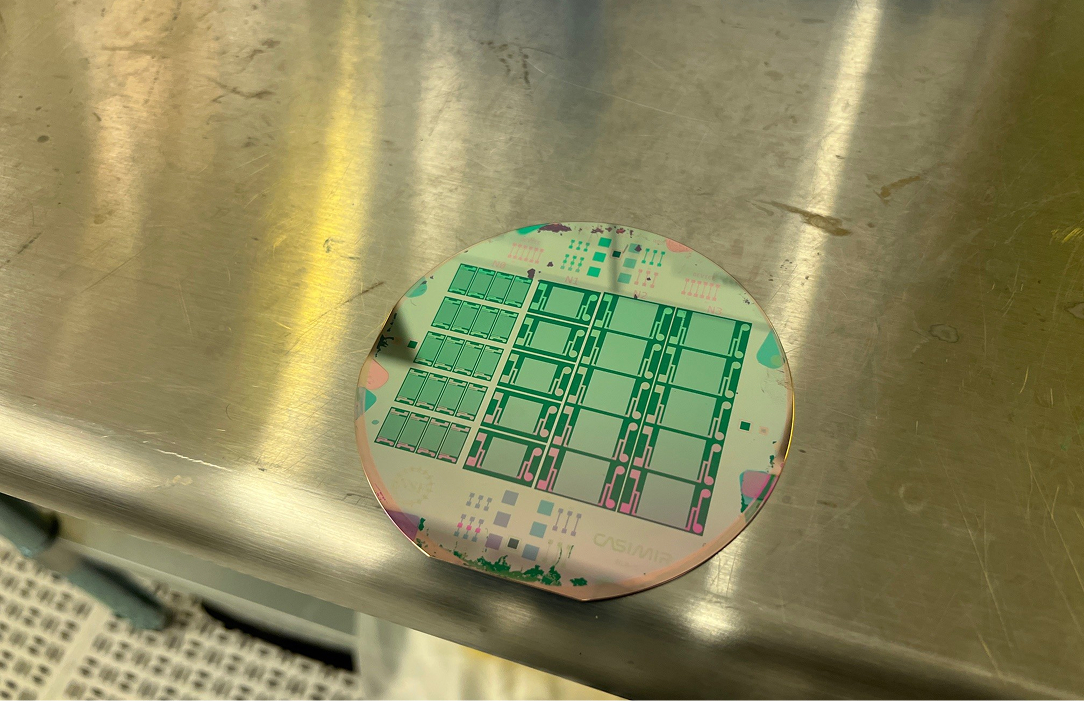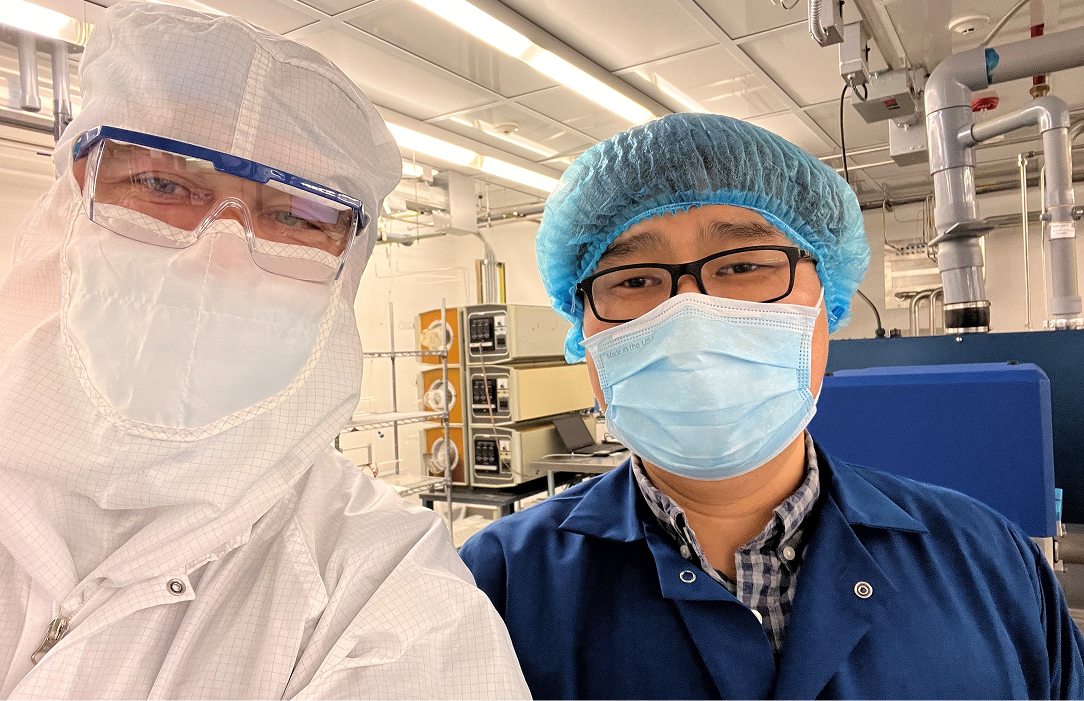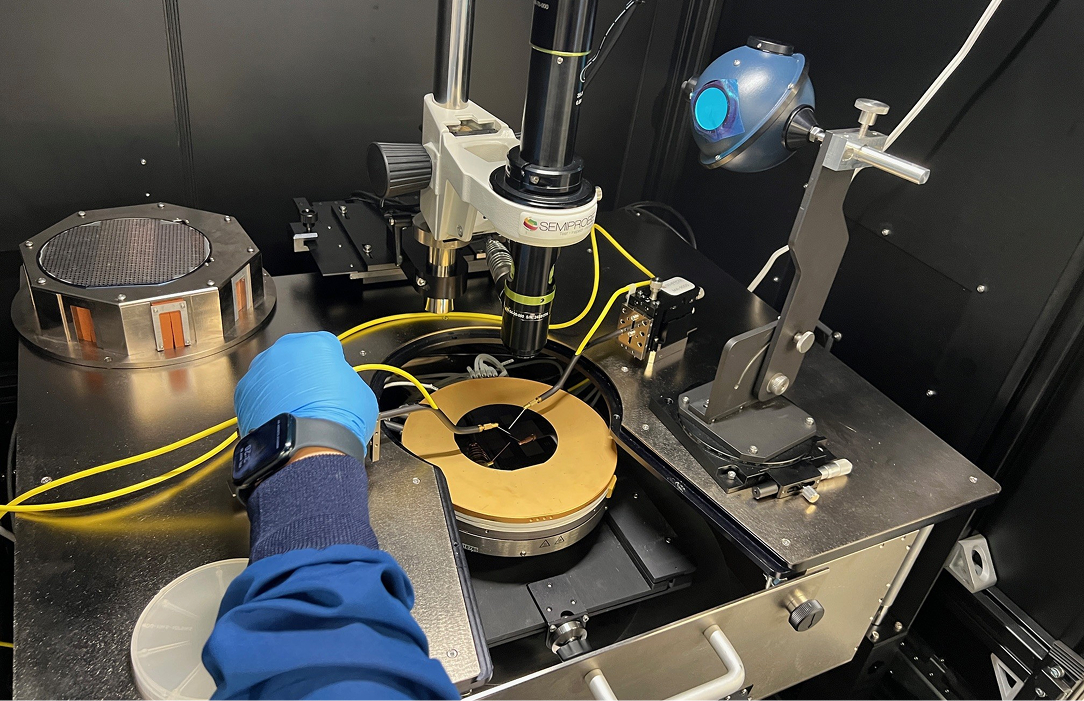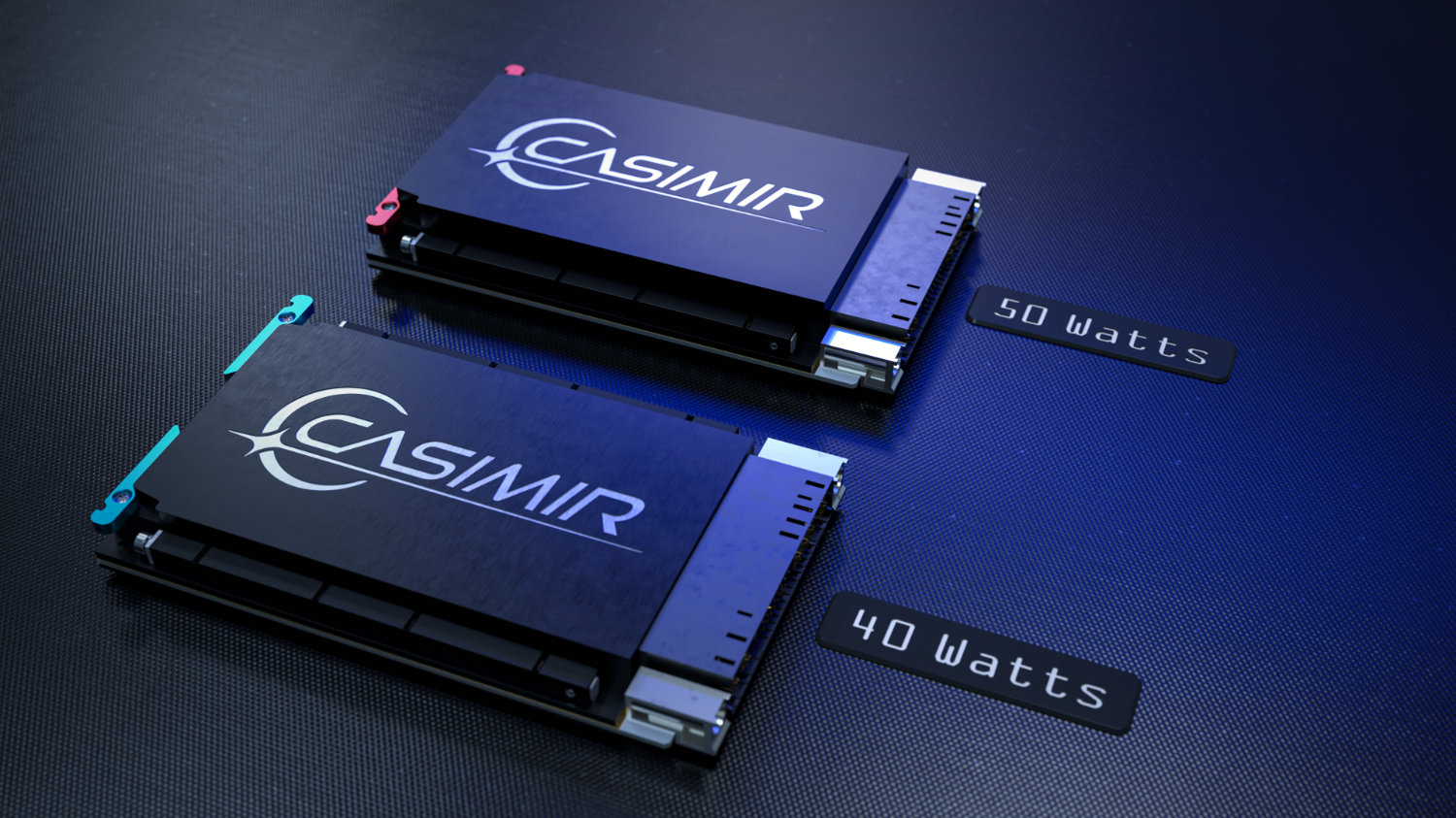Casimir is developing a breakthrough power-generating nanotechnology that will herald a new dawn in power.
By harvesting energy from the quantum field, the Casimir microsparc is like a battery that never needs recharging or a solar panel that works in the dark.
Quantum space is filled with constantly fluctuating fields and particles, a seething sea of microscopic energy.
Here’s how the Casimir Effect works.
So we engineered a custom nano-structure that interacts with quantum fields to harvest energy.
Introducing a new dawn in power, the Casimir microsparc.
The Casimir approach fixes the plates to a silicon substrate so they cannot move and connects them electrically. In the center gap, we add a line of electrically connected nano-pillars that are isolated from the plates allowing us to harvest energy.

Imagine a Pacific atoll. The ocean outside is full of chaotic wave energy, while the lagoon inside is calm. In the same way, the outer plates feel the full “wave energy” of the quantum vacuum. Every so often, an electron tunnels from the plates to the central pillars. Inside the gap, the calm lagoon fluctuations are weaker, so the electron is unlikely to return.
When the plates and pillars are connected through a circuit, electrons flow back to the plates, and the cycle repeats without stopping. By combining many of these cavities, Casimir can produce steady power at the levels needed for everyday electronics and far beyond.

Casimir scales from the humble to the audacious
The first-generation microsparc delivers performance comparable to a small ceramic rechargeable battery or a solar panel no larger than your fingertip - but without the need for external charging or light.
To scale our technology, we are building multi-layer Casimir chips and using advanced die-stacking to pack up to 100x more power into the same compact footprint.
Mass production will drive costs down, making our Casimir Microsparcs competitive for the consumer electronics market.
Our first products will be hybrid power systems designed to work alongside existing batteries.
By pushing the limits of performance at the chip level with denser multi-layer architectures and more advanced die-stacking techniques, we significantly increase power density per device.
When manufactured at scale, these performance gains unlock the economics needed to deliver cost-effective, high-power systems.
.svg)
